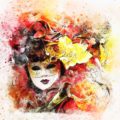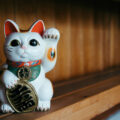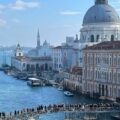“If your pictures aren’t good enough, you haven’t come close enough.”
Robert Capa
In Abano Terme, at Villa Bassi Rathgeb, until June 5, is proposed to the public the photographic exhibition ROBERT CAPA, photographs beyond the war: the three floors of the Villa that, from noble residence of the sixteenth century, is now an active and dynamic cultural center, collect a hundred extraordinary photographs. All just 700 meters far from the AbanoRitz.
The exhibition project, curated by Marco Muniz with the patronage of the Hungarian Consulate, wants to give space to shots not exclusively related to the drama of war for which Capa is so famous, revealing the other face of the photographer. There are in fact many photos taken on film sets (Ingrid Bergman was a great love of his, ed.) or dedicated to his friendships with artists and writers of the time such as Hemingway, Steinbeck, Picasso….
Born in Hungary in 1913 to a Jewish family that dealt with high fashion, Robert Capa moved to study in Germany and then from there, during the Nazism, in France, where he began to work as a freelance photographer self-taught. In 1947 together with Henri Cartier-Bresson, David Seymour, Georges Rodger and William Vandivert he founded the photographic agency Magnum Photos, which with its ethical and aesthetic canons still defines the way in which photojournalism tells the world.
Capa empathically photographed the “micro stories” that gravitate around the “story”, framing not so much the fact itself but the people around it. His Leica tells without filters and with a raw style supported by an instantaneous photographic language. During his career, the iconographic legacy of Capa (born Andre Ernö Friedmann), counts thousands of photographs that show the aberrant fury of war. In fact, he is considered the first and most famous war photographer, documenting five different conflicts: the Spanish Civil War (1936-1939), the Second Sino-Japanese War (which followed in 1938), World War II (1941-1945), the Arab-Israeli War (1948) and the First Indochina War (1954).
He was the prototype of the photojournalist: his was a reckless life, made of women, big drinks and fatal attraction for danger. He died at only 40 years old by jumping on a mine in Vietnam in 1954.











